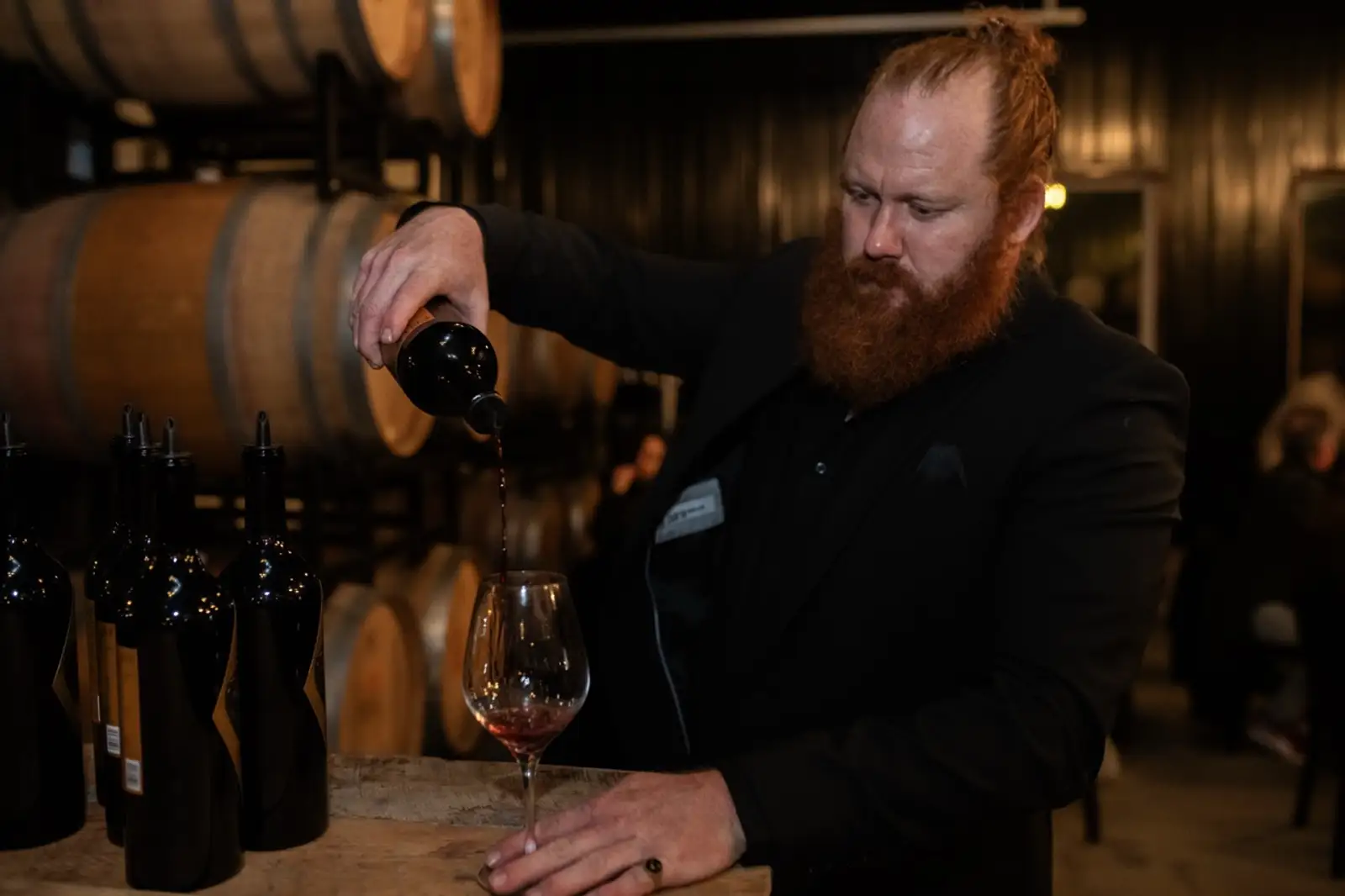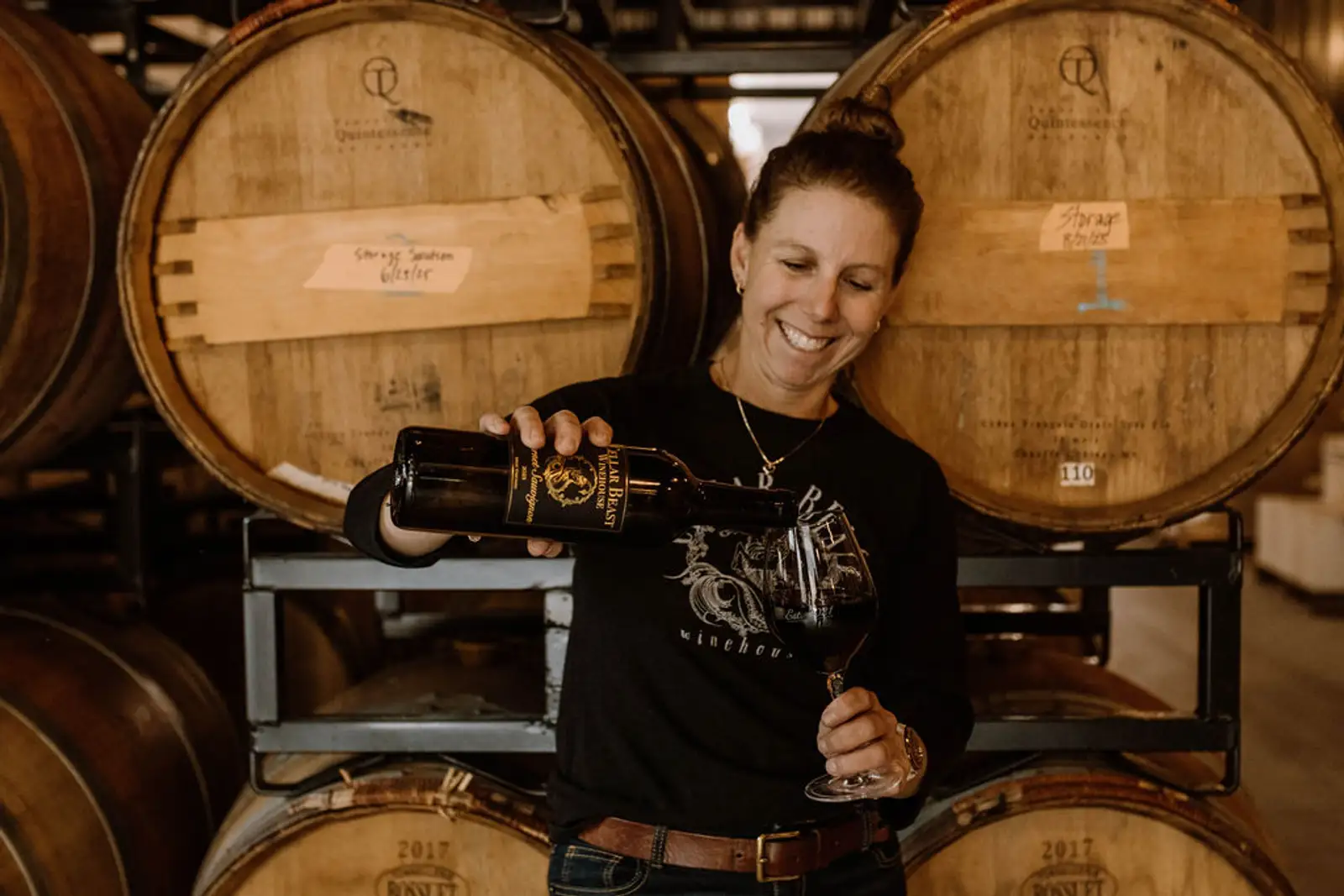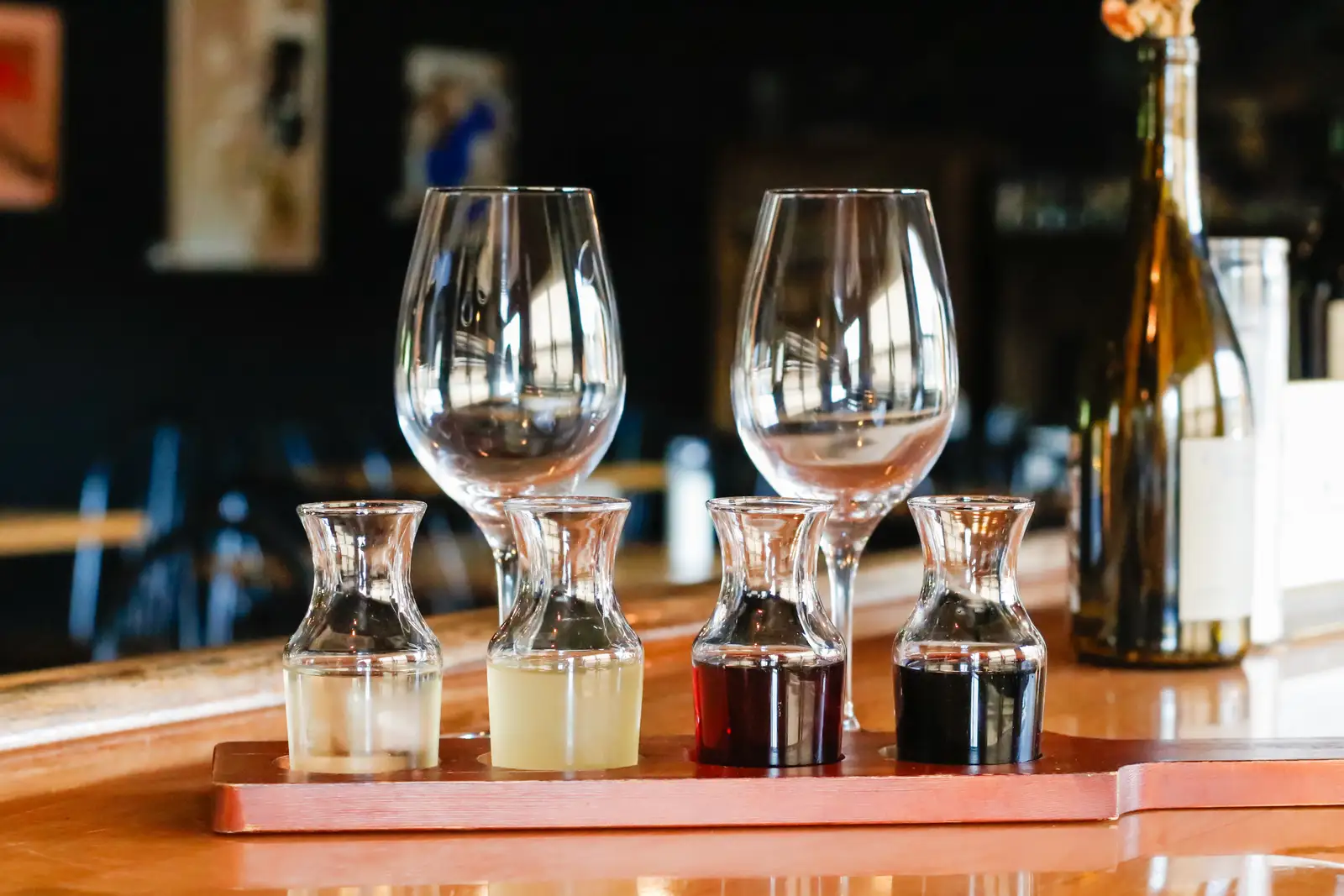As the Head Winemaker at Cellar Beast Winehouse, I often hear guests ask: “What exactly makes a wine dry?” It’s a fundamental question, because understanding dryness helps wine drinkers make confident choices, whether they’re picking up a bottle of Cabernet Sauvignon, exploring a Pinot Noir, or comparing Old World wines to New World wines. In this guide, I’ll explain what dry wine really means, how it relates to residual sugar, and how factors like fermentation process, alcohol levels, and varietal wines influence the sweetness level. Along the way, I’ll share tasting notes, pairing suggestions, and practical tips for evaluating dry wines.
Defining Dry Wine — Residual Sugar and Sweetness Level
The key to understanding dry wine is residual sugar (RS)—the natural sugars left in wine after fermentation. A dry wine typically has very low residual sugar levels, usually under 10 grams per liter. Unlike the perception of fruit flavors, which may suggest sweetness, residual sugar directly reflects how much sugar remains unfermented. Tools like the Oechsle scale, Baumé scale, and KMW scale are used in winemaking to measure sugar in grapes and determine potential alcohol.
It’s important to note that dry doesn’t mean bitter. A wine can taste fruity (like Pinot Grigio or Sauvignon Blanc) yet still be dry because the fermentation process consumed the natural sugars. Conversely, wines like Sélection de Grains Nobles, made from noble berries affected by botrytis, are intentionally sweet. The Court of Master Sommeliers explains that “dryness in wine is defined by the absence of perceptible sugar, not by the presence of tannin or acidity” (Court of Master Sommeliers, Advanced Exam Study Guide)
How Winemakers Craft Dry Wines
In the cellar, dryness is achieved through fermentation. Yeast consumes grape sugars, producing alcohol and CO₂. If fermentation continues until nearly all natural sugars are converted, the wine becomes dry. Some winemakers may stop fermentation early, leaving a touch of sweetness, while others allow complete dryness. As Dr. Vinny of Wine Spectator notes, “Dryness is determined by the fermentation process, whether yeast has fully converted grape sugars into alcohol.”
Winemaking decisions—such as yeast strain, fermentation temperature, and whether to stabilize with potassium sorbate, or potassium metabisulfite, play a role in dryness and stability. Even post-fermentation techniques, such as using a food-safe gas system, protect wine from oxidation. At Cellar Beast, we lean on Old World methods while keeping tech sheets and nutrition facts transparent for those who want more profound insights. Learn more about Cellar Beast's winemaking methods in our recent blog post.
Types of Dry Wines
Dry Red Wines
Dry Reds like Sangiovese, Cabernet Sauvignon, Pinot Noir, and Red Blends (including styles reminiscent of Bordeaux) often define the category. For example, our Yakima Valley 2023 Sangiovese shows classic savory structure with minimal residual sugar. Check Cellar Beast's Sangiovese
Dry White Wines
White Wine can also be bone dry. Pinot Grigio, Cellar Beast Chardonnay, and Sauvignon Blanc from regions like the Columbia Valley or South Africa often emphasize acidity over sweetness. Cooking wines—like Dry White Cooking Wine or even Goya Dry White Cooking Wine—are dry by design, though they serve a very different culinary purpose.
Sparkling Wine
When it comes to sparkling wine, terms like Brut Nature and Extra Brut indicate extremely low residual sugar. These wines are crisp and refreshing, perfect for occasions like Dry January when drinkers want structure without sweetness.
Special Mentions
- Bordeaux Blanc: often a dry, citrus-driven blend of Sauvignon Blanc and Sémillon.
- Mizzou Vintage Dry White and regional examples like Valle Central (Chile) or South Eastern Australia: affordable introductions to dry whites.
- Dry Red Blend: versatile, approachable for everyday wine drinking.
The Dryness Scale
Dryness exists on a continuum:
- Bone Dry: <1 g/L RS
- Dry: 1–10 g/L RS
- Off-Dry: 10–35 g/L RS
- Sweet: >35 g/L RS
While these numbers give a guideline, perception matters too. Alcohol levels, acidity, and tannins influence how dry a wine feels in the mouth. The International Organisation of Vine and Wine (OIV) defines “dry wine” as having no more than 4 grams per liter of residual sugar, though perception can vary with acidity. A high-tannin Cabernet Sauvignon may leave a dry mouth sensation, even if its residual sugar is slightly higher than that of another wine.
Pairing Suggestions for Dry Wines
- Dry Reds (Cabernet Sauvignon, Pinot Noir, Dry Red Blends): pair with grilled meats, tomato-based pastas, and aged cheeses.
- Dry Whites (Pinot Grigio, Sauvignon Blanc, Chardonnay): pair with seafood, poultry, and fresh salads.
- Sparkling Wine: versatile with salty snacks, charcuterie, or even Spanish tinto de verano-inspired tapas.
Fun twist: pair dry wines with small bites like Manzanilla olives or minced pimientos for Old World flavor combinations.
Dry Wines Across the World
- Napa Valley: known for bold, dry Cabernet Sauvignon.
- South Africa: produces Chenin Blanc and Bordeaux Blanc styles with excellent dryness.
- Columbia Valley, WA: home to structured Sauvignon Blanc and Cabernet Sauvignon
- Valle Central, Chile: affordable, fruit-driven but dry red and white wines.
- South Eastern Australia: crisp, dry varietal wines like Shiraz and Chardonnay.
Jancis Robinson MW describes classic Napa Valley Cabernet Sauvignon as “structured, dry, and long-lived, with tannins that soften beautifully over time” (The Oxford Companion to Wine).
Beyond the Glass: Culture & Curiosity
Wine education often comes with its quirks. For example, resources like Dr. Vinny provide approachable answers to dry questions, while labels sometimes include nutrition facts for those tracking sugar intake. At Cellar Beast, we also publish tasting notes and maintain detailed tech sheets for transparency. Some of our wines—like Jeune Bête or Dark Angel—demonstrate how dryness can highlight terroir. According to the USDA Nutrition Database, a typical 5 oz. glass of dry red wine contains about 120 calories and less than 1 gram of sugar.
Wine culture intersects with everyday life too—think Newsletter Subscriptions for seasonal releases, Member Benefits like Bulk Purchase Pricing, and community-driven events like Les Niveaux or Wall Dogs that celebrate local art and wine. Read more about Dry Red Wines in this recent post.
FAQs
What does dry wine mean?
It means most natural sugars have been fermented, leaving little residual sugar.
Are all red wines dry?
Most high-quality wines are, but not all. For example, some dessert reds or late-harvest wines can be sweet.
Can fruity wines still be dry?
Yes, fruit flavor notes don’t equal sugar. Pinot Noir can be fruit-forward yet bone dry.
What’s the driest style of wine?
Examples include Brut Nature sparkling wine, Pinot Grigio, and dry Sangiovese.
How can I tell if a wine is dry?
Check the sweetness level on tech sheets, look for dryness terms on the label, or ask your winemaker.
Does Cellar Beast make dry wines?
Yes, Sangiovese, Sauvignon Blanc, and many of our Columbia Valley wines are fully dry.
What about cooking wines like Goya Dry White Cooking Wine?
They’re technically dry wines but intended for the kitchen, not the glass.
Are dry wines better for Dry January?
They can be a good fit for moderation, though alcohol levels vary.
About the Author
I’m Matt Check, Co‑Founder and Head Winemaker at Cellar Beast Winehouse. With over a decade in the wine industry—combining vinous craftsmanship with professional sommelier training—I create small‑batch wines that honor terroir and tradition.
I hold a Level IV Sommelier certification from the Wine School of Philadelphia and formal training through the National Wine School. Before founding Cellar Beast in 2021, I cultivated deep relationships with growers across premium AVAs—including Red Mountain and Willamette Valley—ensuring that every bottle reflects its vineyard of origin.
My winemaking has earned national acclaim:
- Dark Angel (Carménère + Petite Verdot) earned a Double Gold & 97 points at the Sunset International Wine Competition.
- In the 2025 American Fine Wine Competition (AFWC), Cellar Beast wines—under my direction—secured six medals, including Double Golds for Old Vine Zinfandel and La Bête, along with Gold for Pinot Noir and Gewürztraminer.
Aside from crafting award-winning wines, I’m passionate about wine education and storytelling. I’ve been featured discussing our French-inspired, hands-on practices on WDIY’s The Inside Dish and leading immersive “Meet the Somm” tasting events right here in Andreas, PA.
Whether you're curious about dry red wines, want to understand fermentation nuances, or appreciate a well-balanced bottle, I’m here to make wine approachable, transparent, and rooted in genuine craft.




